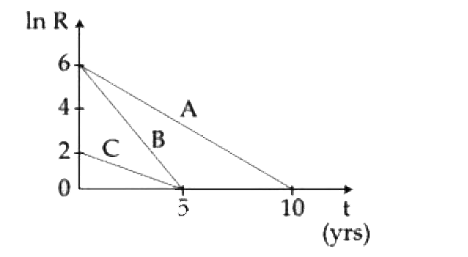A
B
C
D
Text Solution
Verified by Experts
|
Topper's Solved these Questions
JEE MAINS
JEE MAINS PREVIOUS YEAR ENGLISH|Exercise Chemistry|1 VideosView Playlist
Similar Questions
Explore conceptually related problems
JEE MAINS PREVIOUS YEAR ENGLISH-JEE MAINS 2020-PHYSICS
- A bakelite beacker has volume capacity of 500 c c at 30^@C. When it is...
05:24
|
Play - Assume that the displacement (s) of air is proportional to the pressur...
04:51
|
Play - Activities of three radioactive substances A, B and C are represented ...
06:12
|
Playing Now - A balloon is moving up in air vertically above a point A on the ground...
03:41
|
Play - An electron is constrained to move along the y- axis with a speed of 0...
03:24
|
Play - A helicopter rises from rest on the ground vertically upwards with a c...
06:51
|
Play - A galvanmeter of resistance G is converted into a voltmeter of range 0...
04:42
|
Play - If capacitor with capacitance C,2C are initially at potential v, 2v re...
04:26
|
Play - With increasing biasing voltage of a photodiode,thephotocurrent magnit...
02:40
|
Play - Acceleration due to gravity is same when an object is at height R/2 fr...
03:09
|
Play - A solid shere of radius R carries a charge Q distributed uniformly ov...
07:15
|
Play - A disc with moment of inertial I is rotating with some angular speed. ...
06:02
|
Play - For a concave mirror
03:51
|
Play - Three different processes that can occur in an ideal monoatomic gas ar...
07:53
|
Play - Number of molecules in a volume of 4 cm^3 of a perfect monoatomic gas ...
04:44
|
Play - A square loop of side 2a and carrying current I is kept in xz plane wi...
06:14
|
Play - A physical quantity z depends on four observables a, b, c and d, as z ...
03:39
|
Play - A shell of relative density 27/9 w.r.t water is just submerged in wat...
05:31
|
Play - In a resonance tube experiment when the tube is filled with water up t...
02:40
|
Play - An electrical power line, having a total resistance of 2Omega, deliver...
03:18
|
Play
